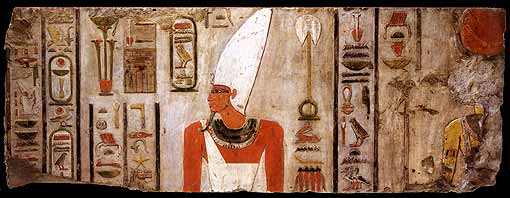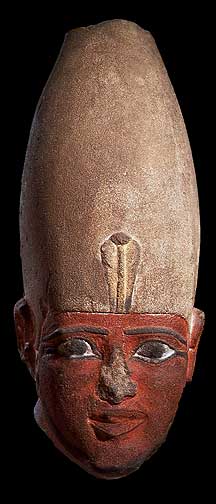|
The first true
king of the Middle Kingdom, he built upon the foundations left
by his predecessors, continued the battle against the Herakleopolians
and united all Egypt.
When Mentuhotep camle to the throne an uneasy peace lay between
the two kingdoms of Thebes and Herakleopolis. However, Mentuhotep
had inheritated a kingdom plagued with famine, during this period
the Herakleopolitans tried to re-take the city of This, in turn
Mentuhotep then attacked the more northerly nomes, and captured
Asyut. Once he had passed through the 15th nome without resistance,
Mentuhotep had effectively finally defeated the Herakleopolitan
dynasty (2040 BC).
Mentuhotep then began the long process of politcal change in
Egypt (which would not be fully accomplished until Mentuhotep's
30th year as king - around 2030BC). He left many nomarchs stil
in control of their nomes although he did place controls on them
to restrict their power. Mentuhotep appointed his own men to
all key positions of authority and also moved the capital of
the country to Thebes.
Once he had secured Egypt itself, Mentuhotep II looked to expand
her borders - he led an army west against the Tjemehu and Tjehenu
Libyans and into the Sinai peninsula against the Mentjiu nomads.
Nubia was also a target, although he was unable to recover the
boundaries gained by 6th dynasty kings, he extended Egypt's control
as far as the 2nd Cataract.
Mentuhotep became a prolific builder - the continued the restoration
of the temples of Heqaib and Satis at Elephantine (originally
begun by Intef III), constructions in Deir el Ballas, Dendera,
Elkab, the temple of Hathor at Gebelin (scenes showing the defeat
of the north are shown here), Abydos, the sanctuaries of Monthu
at el-Tod and Armant.
In the cliffs of Deir el-Bahri Montuhotep built himself an impressive
funerary monument
|







